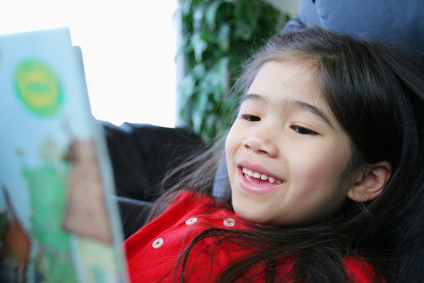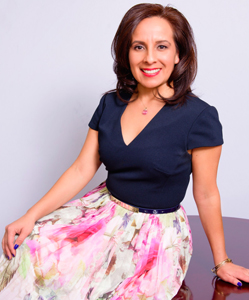Once you have decided on the optimal idea for a book, knowing the logistics and parts of a children’s book will be even more helpful. Knowing the types of books and acceptable story lengths that publishers are looking for as well as understanding some writing basics will add to your success. Let’s begin by reviewing the many types of books that exist within the children’s book industry.
- Board books: These books are aimed for children that can’t read and contain lots of pictures and are usually made from cardboard or chipboard. The story is mostly told by the art work. The books usually are 10 to 14 pages in length. The books cover primary and easy concepts as the audience is rather young and most probably under the age of three. Board books are usually no bigger than six inches.
- Picture books: These books are aimed for the mass market and for children between three to eight years of age. The text is limited but can range up to 1300 words. The books are 16 to 48 pages in length; however, the standard size is 32 pages. The pages are significant in that they must fit into the printing press molds that are used by the industry. In addition, there are also soft covers which are known by the industry as eight by eights (8 x 8). These soft covers range from 8 to 24 pages. Many picture books use “licensed” characters for the story. Licensed characters are characters that are trademarked and are well known such as Mickey Mouse or Minnie Mouse.
- Coloring and activity books: These are books that contain activities such as hidden-word or fill-in-the-dot games and can include things like punch-outs or stickers. These books target children between three to eight years of age.
- Novelty books: These are books that go beyond the regular game type activities for children and are usually interactive with popups and such. These books target children between three to eight years of age.
- Early readers (also known as leveled readers) or early chapter books: These are books targeting children between five to eight years of age. These are geared towards children just learning to read. Within this category, it’s sectionalized even further into different reading levels. Reading levels can vary significantly between five and eight year olds so these additional levels are necessary to differentiate between reader categories. Early reader books may require a writer to work from an established vocabulary word list. Contact publishers to see if they have any lists available. For older children, it’s important that characters be more developed because the audience is a little more sophisticated but not yet at a teen age level. Books for this age group can vary between 32 to 64 pages in length.
Because of the varied reading levels in this group, it’s best to study many of the “I can read” books to get a sense of what publishers are accepting. Also, analyze the early chapter books for audience sophistication and topics that may appeal to this particular group. If you understand or work in an arena that accommodates early child reading developmental skills, this will be extremely helpful to your writing. Ensuring that stories are action packed, dialogue packed and have simplified language will expedite your manuscript getting accepted.
Remember that the story problem should appear at the beginning, your characters should be believable, your characters should grow throughout the story, and the main character should solve the problem. It’s important that your story have an unusual ending to engage the reader. Be careful that your points of view do not shift and that you are showing instead of telling the story. Above all, don’t focus on sending a message but rather on the storyline because both children and adults will tune you out.
- Middle grade books: These books target audiences between 8 to 12 years of age. The writer has to ensure that these books are more powerful and interesting as the audience is just a little more sophisticated. Series-type books work well for this audience. Books for this age group can range between 80 to 200 pages in length. It’s important to know whether you want to write for the younger middle grade child or the more “true” middle grade level audience. This will also determine the complexity of your writing.
- Young adult books: These books target audiences between 12 years to 18 years of age and many times you will find these located in the adult book section in bookstores. These books are written with lots of drama and are complex. The books are usually written around the current issues in a teenager’s life with the protagonist in every scene and chapter. Many of these books are centered on the quest to belong. Books for this age group can range between 128 to 300 pages and the word count can be up to 70,000. Book sizes for this market vary between 4 ¼ to 6 ¾ inches which accommodate the mass market sales. They can also be found in the 6 ¼ to 9 ¼ inch size.
Being that book length is important when writing a children’s book and because there are no hard and fast rules for writing to this group but only strong guidelines by publishers, it makes it more challenging to determine the appropriate needs and wants of publishers and market demands. For starters, just remember that shorter books are created for younger audiences and longer books are intended for older audiences. Also, take the time to study what is currently being published for children as this will be helpful information as you begin writing.
Fiction versus Non-Fiction
Knowing your target market is important but also just as crucial is determining whether your book will be fictional or non-fictional. Knowing this will help determine whether you will be using mostly fictional techniques to get your story across or whether you will be using non-fictional techniques to provide information to your readers. What is the difference between the two? Fiction books are made up by the writer and are not true stories; however, the books can include factual information that may make a story appear more real. Non-fiction books contain facts and are informational. Click here to see more on non-fiction.
General Writing Guidelines
Backstory: This is the information that relates to your characters before the story unfolded. More than likely, most of this information in your character outline will not be used but it’s a good idea to understand everything about your characters as you fold them into the story.
Beginning/Middle/End: This is important for all types of books; children, adult books, fiction or non-fiction. It’s important that all books have a solid ARC. A book should entice a reader, it should make a reader want to continue reading and it should end with a suitable resolution.
Characters: Having an outline as a reference guide for each character is extremely helpful. You may not use all of the characteristics noted in your character outline; however, the more you know about your character the more realistic you will make him appear. Your reader will be more apt to relate to a character if you make that person realistic and you add desires and emotions throughout your story. Add layers of complexity and make sure that there is consistency with what a character does; if character is claustrophobic, don’t make him go up an elevator with no mention of this phobia. Don’t give the reader the character information all at once but rather develop the character as the story unfolds. Demonstrate how the character changes throughout the events in the story. Make your characters different so that they don’t all mesh together and make sure that you are developing character ARCs throughout. Above all, don’t make your characters shallow as the reader will not be interested if the character has no depth. See character development under fiction writing.
Conflict: This is the page turner that keeps your reader interested in the story. It is important to place this drama and conflict at just the right pace for your reader. Ending a chapter on a high drama point is essential for children’s books.
Dialog: It’s important to determine when dialog is necessary for your book. What makes it challenging is that there are no exact rules but only guidelines to using dialog. Strive to create memorable scenes. Dialog should be providing information, developing a character and moving the story forward. If you find that you are using too much narrative to explain a character, then it’s probably a good time to throw in some dialog. It’s important not to write dialog exactly like you hear it but rather add some dialog tension and make it interesting. If at all possible, try to avoid using “he said — she said” but if you must use these then use them sparingly. It’s important that children sound like children and that they are not presented speaking like adults. This applies when writing any type of book; make sure the character sounds their age. See dialog development under fiction writing.
Essential for non-fiction books: Facts need to be accurate. Double check and double check again to ensure that all facts are correct. When possible, have an expert review the information.
Flashback: Some authors use flashback to reveal things about a character’s past; however, use this technique sparingly as this can confuse the reader and also interrupt the story.
Plot: Make your plot solid and ensure that it follows through to the end of the story. Add complexity so that it’s interesting and challenging for the reader and make sure that your plot and main characters interlock. Remember that your main character should be in opposition to something that needs problem solving. This opposition will keep the story going forward and should end with the protagonist solving the issue. See plot development under fiction writing.
Structure: This is the backbone of the story (the shell) that keeps everything together and is very closely tied to the plot.
Genres
Children’s books are comprised of several different types of books. Understanding what makes up this mix will help to narrow down your focus when deciding what children’s market you will target.
Action and Adventure: These books target boys and include stories of quests, ventures, and journeys. They contain a lot of material that is action packed and will entice a young male reader.
Biographies: These are books about people and are usually written in 3rd person voice. The stories can be about historical people or about current people. Memoirs fall into this category; although, memoirs are mostly done for adults.
Educational/Learning: These books teach children in some form or another; history, math, techniques, science, etc. They are the how-to books, picture books, board books and early reader books in the children’s category.
Fantasy: These books are based on magical things and rely on having the reader enter into a world of enchantment and make-believe. The reader must be coaxed into this “new” world and forget that the current world exists. This includes books such as Lord of the Rings written by R.R. Tolkien or the Harry Potter series written by J.K. Rowling and other fairytale type stories.
Ghost Stories/Horror: These are stories that are hair raising, eerie and just plain scary. These stories are based on what is thought of as reality by most people.
Girlie books: These books cater to girls and includes things like romance, horse stories, ice skating and topics such that girls prefer.
Historical Fiction: These books are based on real people in history but the story is not true.
Religion/Multicultural/Diversity: These books deal with diversity and the many multi-cultural topics. They include bible stories or things with a religious theme.
Science Fiction: These books are similar to the fantasy books in that they must coax the reader into this “new” world and make them forget that the current world exists. The reader has to accept what the writer is writing is true. They are made up stories with new worlds or places that don’t really exist except in the mind of the writer.






